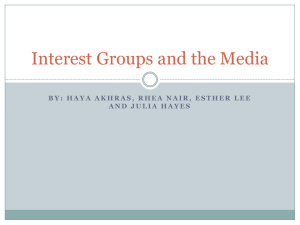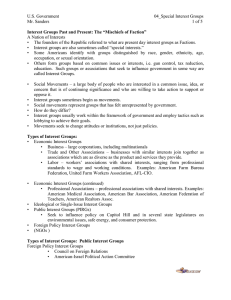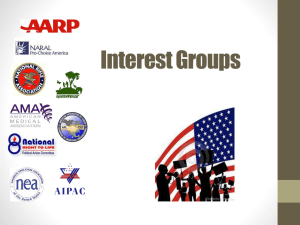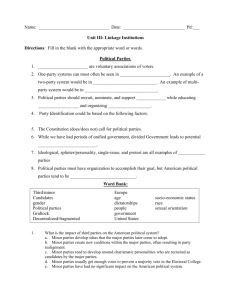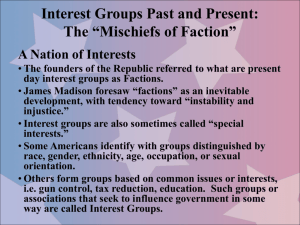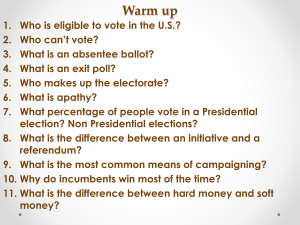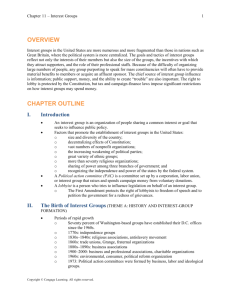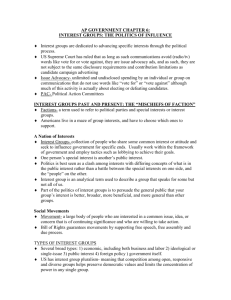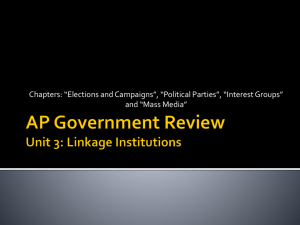Chapter 18: Interest Groups & Public Opinion
advertisement
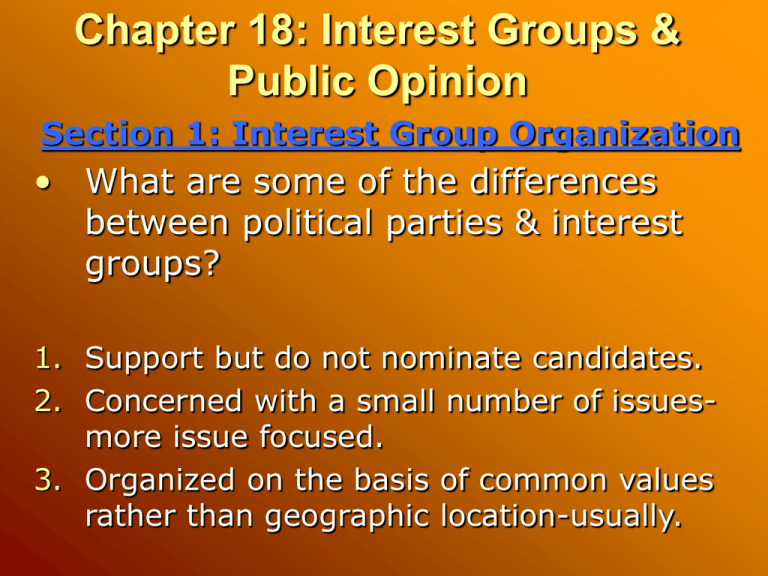
Chapter 18: Interest Groups & Public Opinion Section 1: Interest Group Organization • What are some of the differences between political parties & interest groups? 1. Support but do not nominate candidates. 2. Concerned with a small number of issuesmore issue focused. 3. Organized on the basis of common values rather than geographic location-usually. Section 1 Interest Group Organization contd. In regard to political power what old principle do interest groups hold? “There is strength in numbers!” Why is this a relative concept? Is this old principle ever wrong in regard to interest groups? Leadership & Membership In what ways do interest group leaders strengthen the political power of their groups? Why do people join interest groups? Leadership & Membership Business interest groups usually lobby for lower individual and corporate taxes & limited government regulation of business Labor-related groups & unions support workers, collective bargaining, & voter registration & political organization for pro-labor candidates. Section 2: Affecting Public Policy What/who are lobbyists? What kinds of people are lobbyists? What are the key roles of lobbyists for government? Section 2: Affecting Public Policy Carton from: www.politicalhumor.com Section 2: Affecting Public Policy Carton from: www.politicalhumor.com Section 2: Affecting Public Policy The Rise of Political Action Committees (PACs) Prior to 1971 wealthy individuals, corporations, and unions could give as much money as they wanted to candidates and groups. New regulations were passed in the postWatergate spirit of reform. 1971 Federal Election Campaign Act 1976 Supreme Court ruled any independent group may give money to a candidate as long as the group does not have legal ties to that candidate. In recent elections how have PACs affected the conduct or outcomes of elections? Examples? Section 2: Affecting Public Policy The Rise of Political Action Committees (PACs) McCain-Feingold-Cochran Campaign Reform Bill-2002 A Ban on Soft Money. Ban all soft money contributions to national political parties from corporations, labor unions, and wealthy individuals. McCain-Feingold-Cochran would also double the amount of "hard" money individuals may contribute to state parties for use in federal elections, from $5,000 to $10,000. Section 3: Shaping Public Opinion Personal background & life experiences exert important influences on opinion formation in six key areas: 1. 2. 3. 4. 5. 6. Family & Home Influences Schools Peer Groups Social Characteristics Mass Media Other Influences? Section 4: Measuring Public Opinion Picture from www.wikipedia.org

